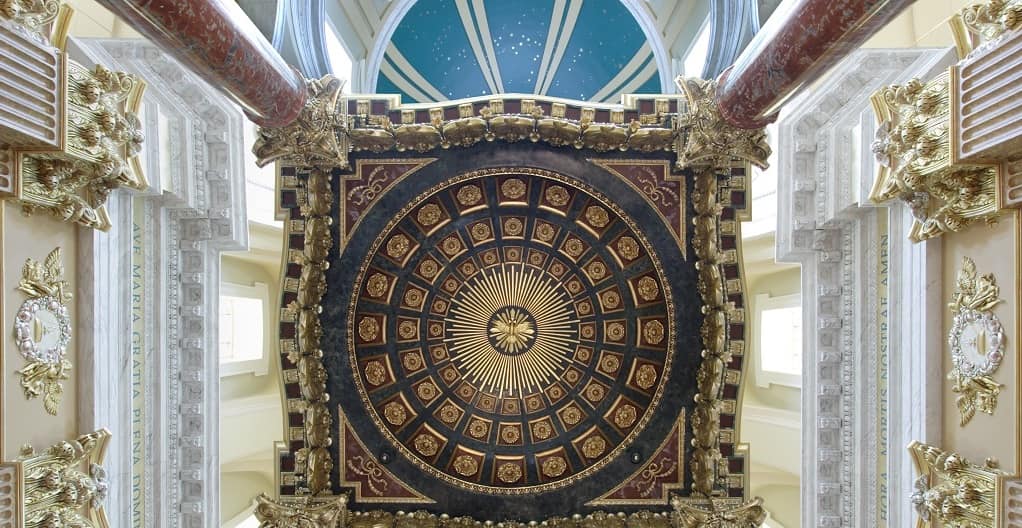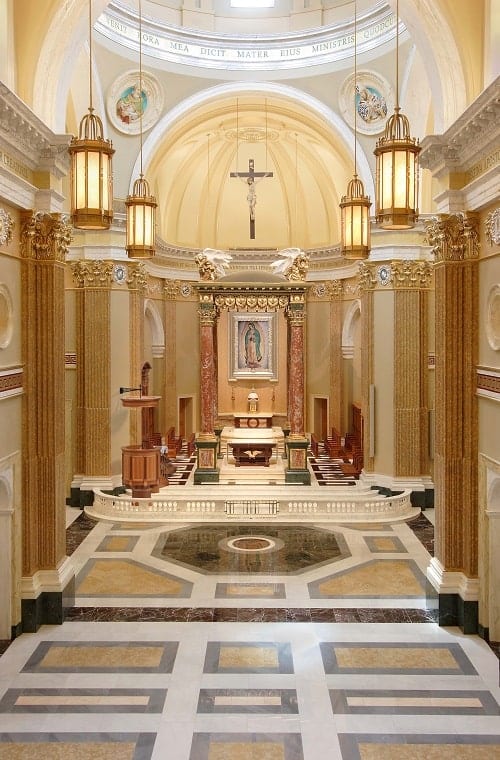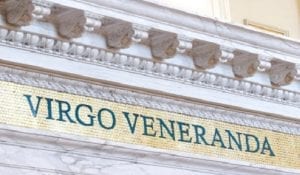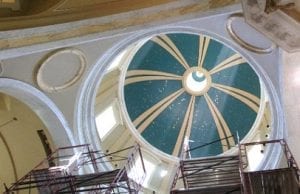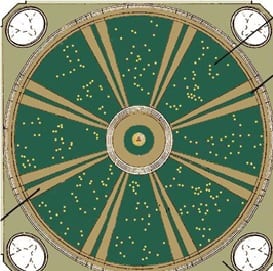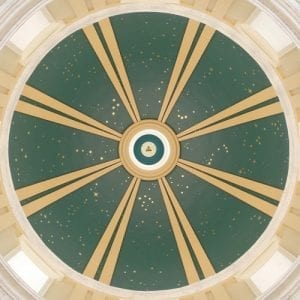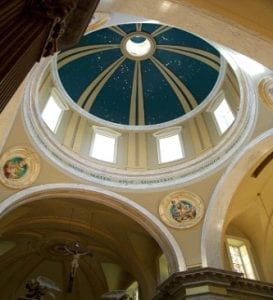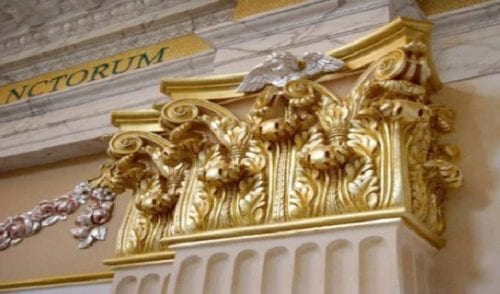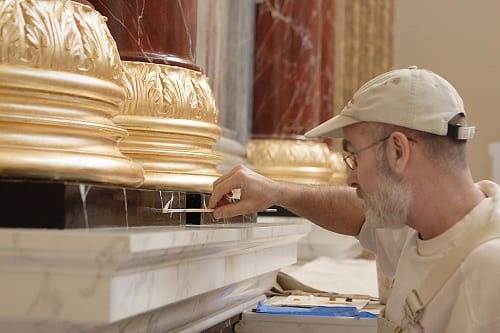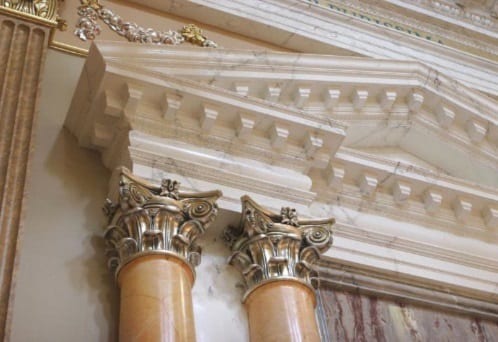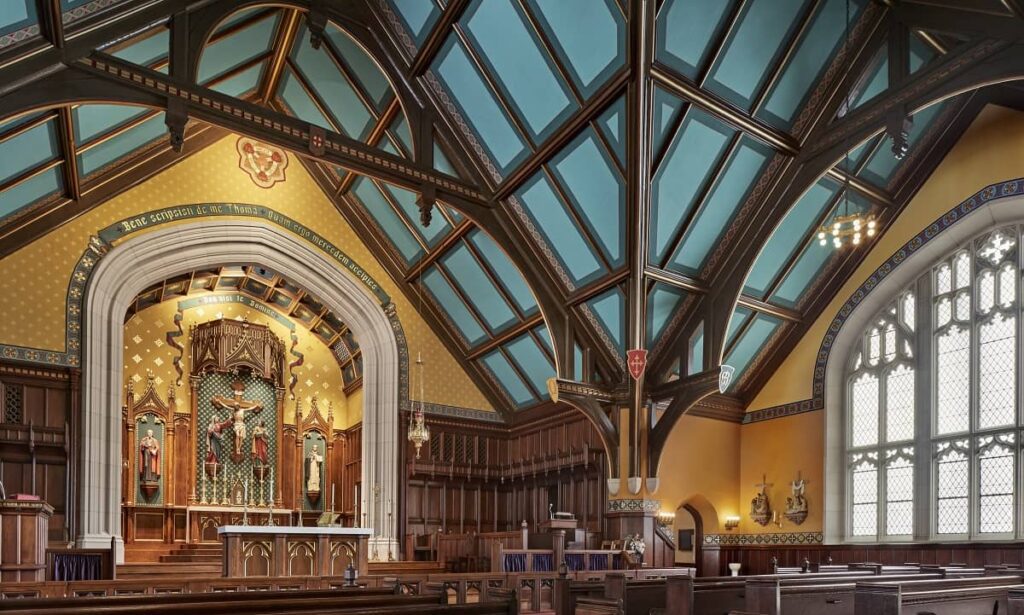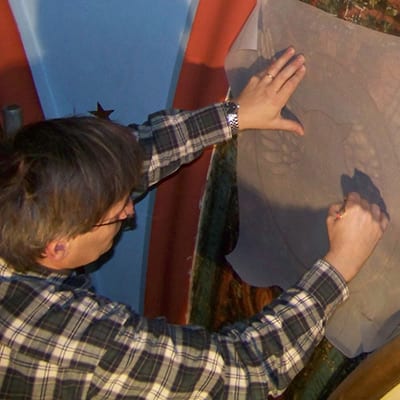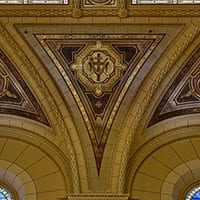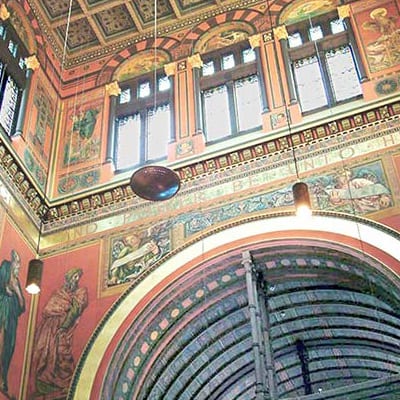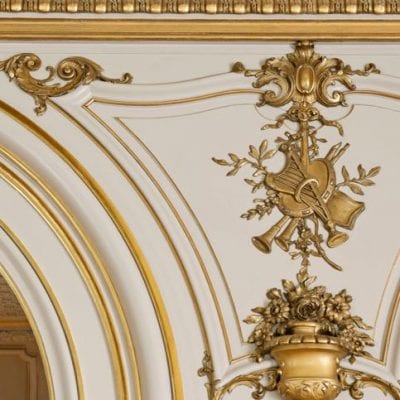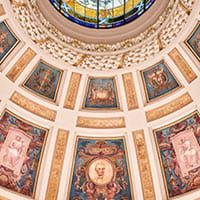In 2006 we had the privilege to work with church-architect Duncan Stroik to provide the liturgical design scheme for a new shrine- The Shrine of Our Lady of Guadalupe. John Canning & Co. also executed all decorative finishes, which included gilding, stenciling, twenty-eight different faux marble finishes and three granite finishes, as well as a turquoise sky, designed to match the color of Our Lady’s mantle with gold-leaf constellations representing the constellations of Winter Solace. Work also included the metal framing and three-coat plaster as well as the fabrication installation of all ornamental plaster.
The Classical interior of the Shrine of Our Lady of Guadalupe in La Crosse, Wisconsin, an ambitious composition of decorative finishes and detailed ornamental plaster, overwhelms the visitor with beauty. The architecture of this shrine is filled with glorious cast ornamental plaster deserving of the rich blend of finishes applied. The design and creation of a church on this scale, with this level of attention to classical detailing, using traditional materials and techniques, is an unusual undertaking in this age.
The Completed Interior.
“Everything has meaning, and there is a rationale for all the colors and design elements,” says John Canning, a Principal and Founder. With an understanding of church iconography and the special symbolism associated with our Lady of Guadalupe, John created an analogous colour scheme with a neutral greenish raw umber as the base for the walls to create a harmonious ambience of tranquility, contemplation and mystique. This analogous scheme for the walls acted as as a foil for the colorful shrines in the side aisles and transepts, as well as for the magnificent baldacchino and mosaic image of Our Lady in the sanctuary. The palette was not chosen from manufacturers’ paint chips, but rather mixed and developed just for this space, first in our studios, and then tweaked and perfected on site.
The creamy yellow used on the vaulted ceiling is inspired by the tones of the quarries in the stained-glass windows, and the turquoise color strategically placed throughout is taken from Our Lady’s mantle.
“Before Our Lady appeared to Juan Diego in December 1531, only the Aztec emperor could wear the turquoise color.” “Every element of her image, every nuance and motif, was an important teaching tool in the 16th century New World. Those are the elements we drew on for this interior.”
John Canning design effort included a visit to Santa Maria’s Maggiore in Rome and research into the Apparition of Our Lady of Guadalupe to be able to grasp of the shrine’s symbolic nature and the complex decorating process that would be involved.
The same turquoise found in the dome can be seen in the lettering which encircles the shrine. This color is reminiscent of the turquoise mantel Our Lady of Guadalupe wore when she appeared to Juan Diego.
Variations of gilding with toned glazes were implemented to represent different metals throughout the sanctuary. At side shrines, the column shafts were gilded in silver with simulated etching of Castilian rose motif. The gold and silver scheme throughout the Shrine of Our Lady of Guadalupe hearkens to Mexican tradition and is a regal, feminine aesthetic fitting for Our Lady.
The church dome, some 98 feet above the crossings marble floor, decorated with 23-karat gold leaf stars, depicts as viewed from Tepeyac Hill outside Mexico City in 1531, when Our Lady appeared to Juan Diego. John designed a composition based on a formation of the constellation for that date and geographic location with the assistance of astronomers at the Talcott Mountain Science Center in Avon, Connecticut. The stars are eight-pointed to represent the Holy Baptism and are set against a turquoise color night sky. Surrounding the central image of Our Lady in the sanctuary is a backdrop composed of the glyphs seen on her tunic; they are representative of flowers and leaves important to the Aztecs.
The design process began with the actual position of the stars of the winter solaces of 1531, as viewed from Tepeyac Hill outside Mexico City. The constellations were divided into 8 segments marked by the ribs of the dome. From that rendering, the constellations were accurately gilded onto the dome.
The Completed Dome.
In all, approximately 28 different marbleized finishes and 3 granite finishes were executed. Gold, aluminum, and Dutch metal gilding further embellish the architectural detailing. Much of the gilding is glazed, stenciled, or textured to simulate other materials, such as bronze. The completed decoration is as a tour de force of marble that represents the old world, and metals that represent the new world. In fact, it was the first gold of the new world used to decorate the magnificent coffered ceiling of Santa Maria Maggiore in Rome.
The capitols and canopy with the seraphim’s, are cast in plaster, and faux finished to simulate aged gilded bronze, and marbled. The underside of the baldacchino with the Holy Spirit radiating from the center.
Detail of the faux marble finishes and antiqued silver capitals.
In the transepts, the two major shrines celebrating the Sacred Heart and the Immaculate Heart are thoughtfully decorated. The masculine tones of red and gold dress the Sacred Heart shrine, while cream shades and soft silver create an appropriately feminine style to the Immaculate Heart imagery. Swagged garlands of silver roses flanking the ecclesiastical symbols encircle the worship space, continuing the feminine theme. Above, on the marbleized entablature, a simulated gold mosaic frieze bearing turquoise-colored Marian inscriptions bands the interior and the base of the dome.
“Perhaps the most ambitious undertaking of all in the design and creation of this shrine was in its ornamental plaster,” says David Riccio, a Principal and President. “Almost every architectural element throughout the massive interior has been carefully detailed and crafted from cast plaster, including the six-ft. tall classical entablature which encircles the nave, transepts and sanctuary. It presented the greatest challenge as it transitioned around pilasters, the central crossing below the dome, and into the radius of the apse. A custom framework needed to be erected around the full perimeter of the space to hold the great weight of the plaster.”
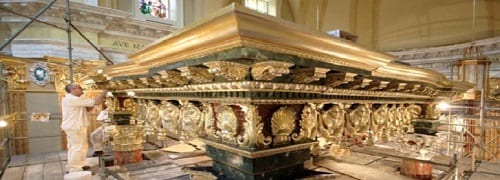
This baldacchino is a copy of Santa Maria’s Maggiore one in Rome. The capitols and canopy with the seraphim’s, are cast in plaster, and faux finished to simulate aged gilded bronze, and marbled.
“As much as the exterior of Our Lady displays the special nature of this shrine, it is its breathtaking interior that embodies its spirit.” It was to be achieved through a high level of attention to classical detailing, using traditional materials and techniques.” Riccio.
Detail of the faux marble finishes and antiqued silver capitals.
“As much as the exterior of Our Lady displays the special nature of this shrine, it is its breathtaking interior that embodies its spirit.” It was to be achieved through a high level of attention to classical detailing, using traditional materials and techniques.” Riccio.
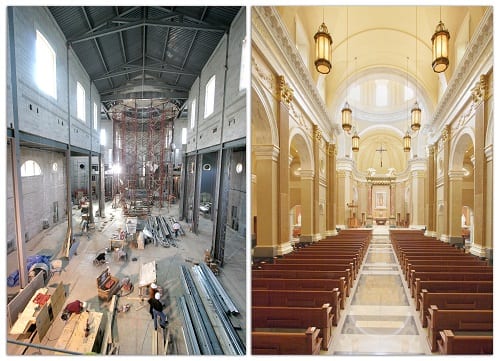
Shrine of Our Lady of Guadalupe Before and After.Shrine of Our Lady of Guadalupe Before and After.
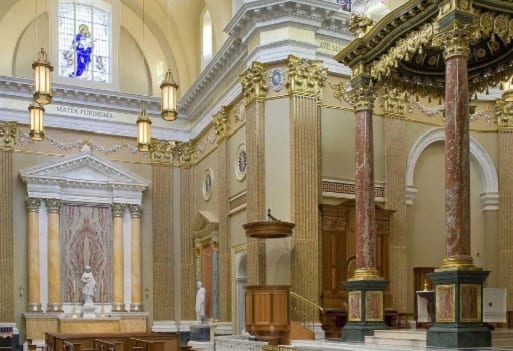
Shrine of Our Lady of Guadalupe
Fun Facts from the Field – Artists’ Secrets In the traditional practice of historic artists and craftsmen of the great cathedrals, members of the John Canning & Co. team applied the names of their children and grandchildren, hidden within the vast decorative scheme of Our Lady of Guadalupe.

